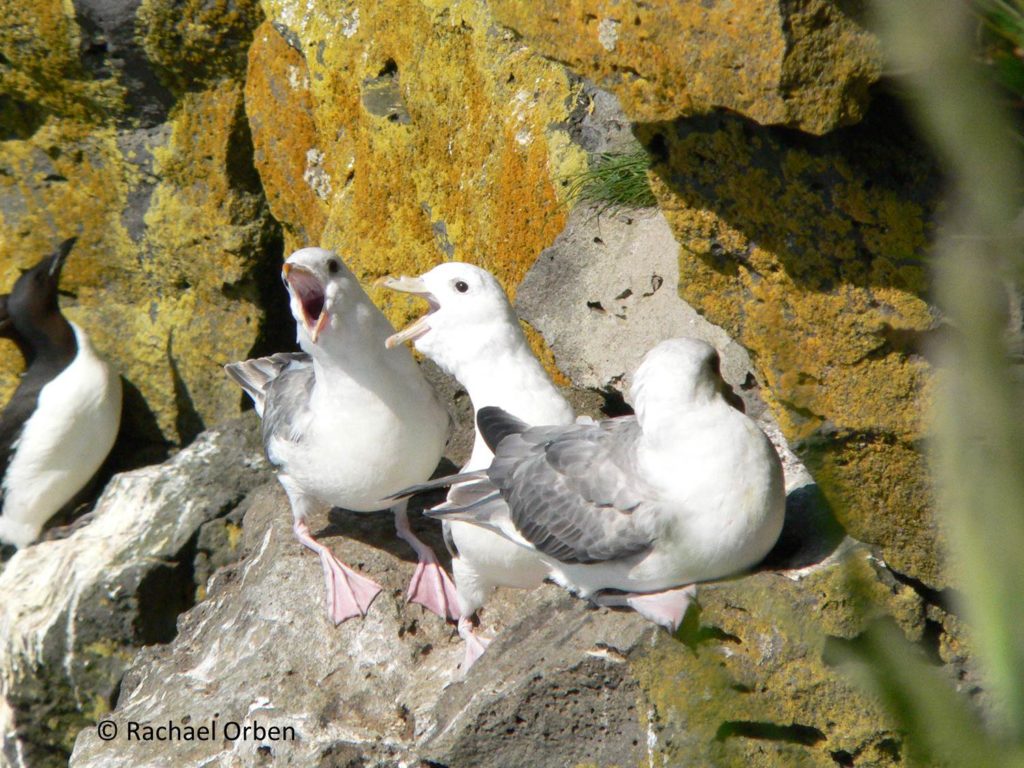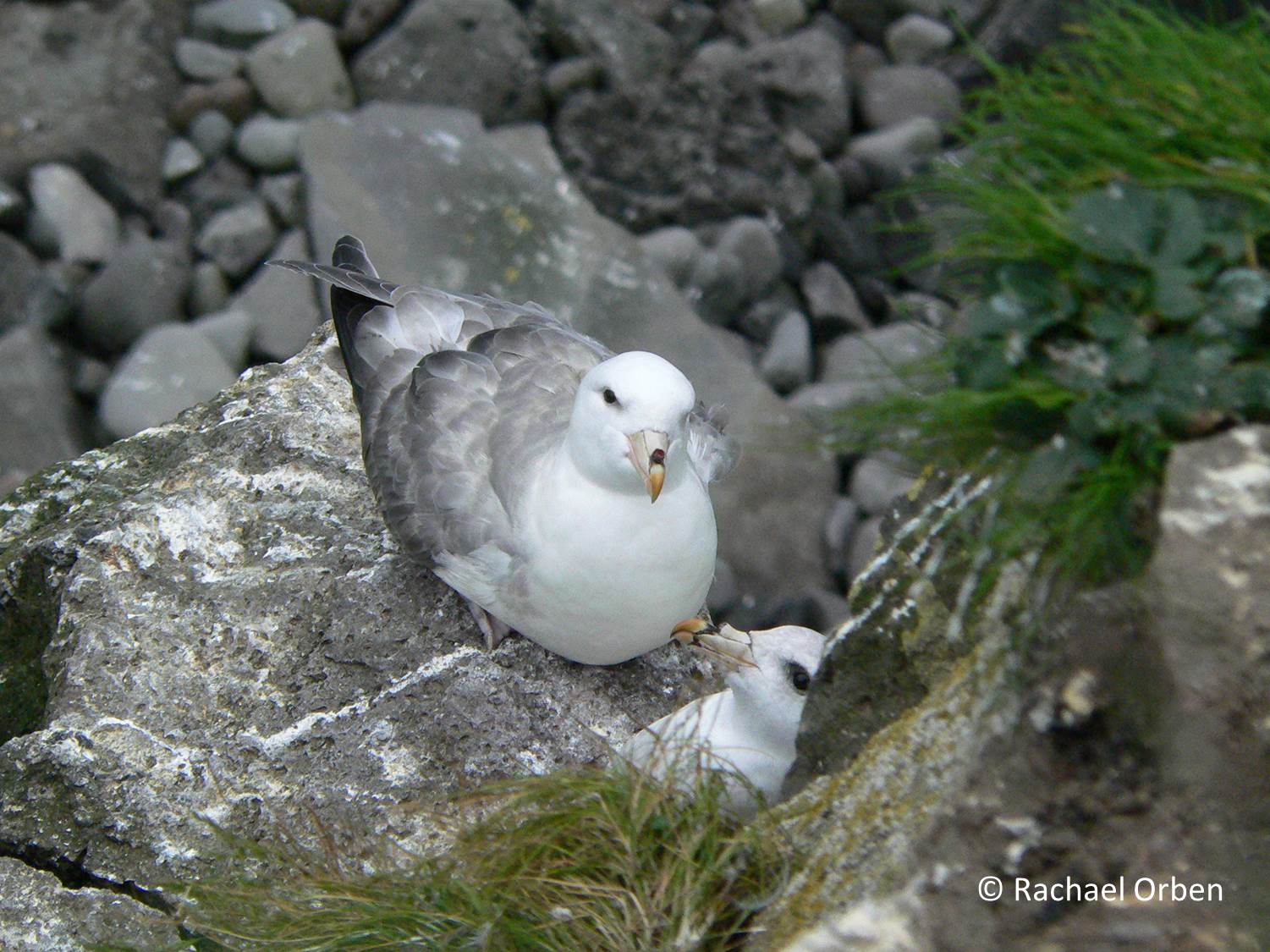Tracing Northern Fulmars caught as fishery by catch back to their colonies.
Over the next couple of years, the Seabird Youth Network will be sharing the results of an important new study on Northern Fulmars. Jessie Beck (Oikonos), the lead scientist of this project, gives us an introduction:
FULMARS: Hundreds of feet above the Pacific Ocean, thousands of seabirds nest across the steep cliffs of a rocky island. Many of these birds are Northern Fulmars, a relative of albatrosses and petrels, and one of the most common seabirds in Alaska. They breed in cliff colonies on islands during the summer months, with the majority of birds breeding at colonies on the Pribilof Islands, Hall and Matthew Islands, the Semidi Islands, and at Chagulak Island. When they are not caring for their chicks, fulmars are out at-sea, finding food for themselves and their chicks. In the winter, after their chicks have fledged, they spend their entire time at sea, sometimes migrating all the way down to California in their search for food.

FISHERY BYCATCH: In Alaska, fulmars forage (find food) in areas of ocean that overlap with the North Pacific groundfish fisheries. Sometimes, the fishing boats accidentally catch animals like seabirds and marine mammals. This is called bycatch. While the fishing boats try to avoid accidentally catching seabirds by using streamers and other tools to keep the birds away from the hooks and nets, thousands of fulmars are caught and die every year.
POPULATION IMPACT? Scientist don’t understand how the accidental killing of fulmars in fisheries affect populations of fulmars in Alaska. An important step in answering this question is understanding which island the birds are from. Was it one of the Pribilof Islands? The Semidi Islands? Chagulak, Matthew or Hall Islands? If the fisheries are accidentally catching birds from mostly one island, this could cause problems for that colony and its ecosystem.
UNIQUE GENES? One possibility is that the genes of fulmars are unique to the island where they breed. Genes are the DNA that parents pass down to their children. Fulmars (like many seabirds) are thought to return to breed at the same colony where they hatched. If this is true, then (over time) the fulmars at each island would start to have genes that are unique or special to that island.
IMPORTANCE OF GENETIC DIVERSITY: The population of all the fulmars in Alaska is stronger if its genes are diverse. The more different the genes are within the whole population, the more easily the population will survive a disease, or adapt to different ocean and climate conditions. Some fulmars might have genes that make them really good at finding food in warmer than normal waters. Others might have genes that make them more able to survive a disease. If fisheries are accidentally killing more birds from one island than another, the genes of whole fulmar population of Alaska might become less diverse.
OUR STUDY: Do fulmars have genes that are special to each colony? Scientists from the National Oceanic and Atmospheric Administration (NOAA), the U.S. Geologic Survey (USGS), the University of California Santa Cruz (UCSC), and the non-profit organization Oikonos are testing DNA in blood samples from fulmars at each of the breeding colonies. Once scientists know whether each colony has unique genes, they will look for those genes in fulmars caught as bycatch to learn which colony they came from. This will help scientists and fishery managers know if more of the bycatch birds are from certain colonies, and how that might affect the genetic diversity of Alaska fulmars overall. Funding for this project is provided by the North Pacific Research Board (NPRB).

